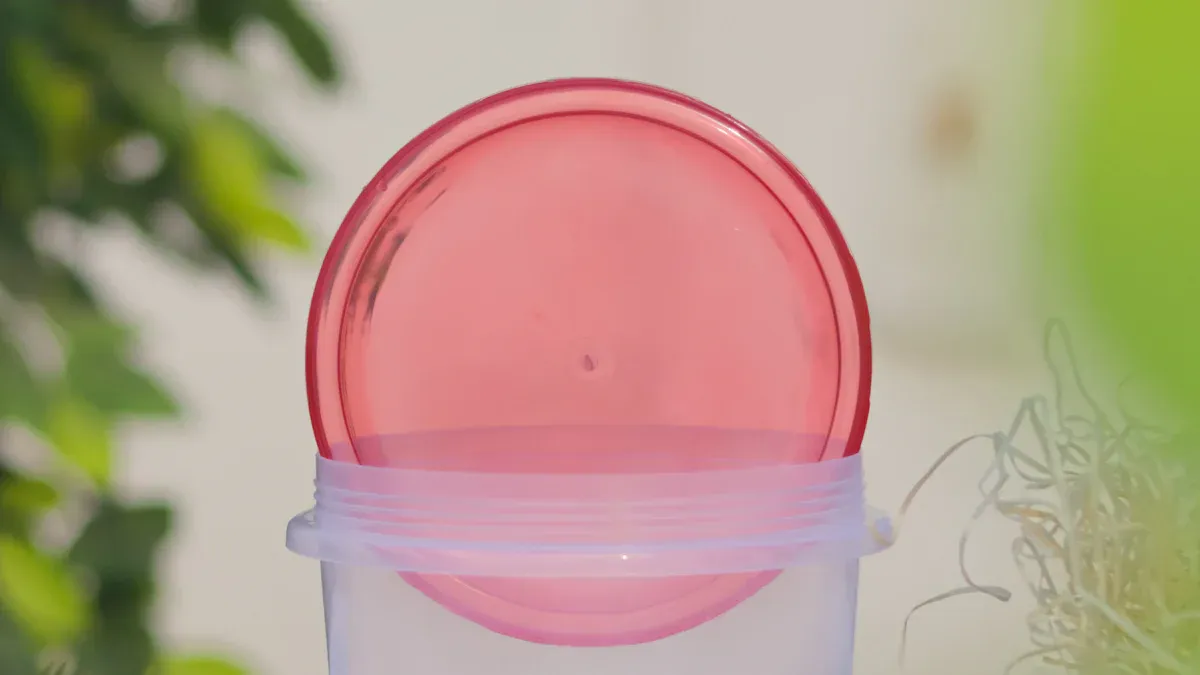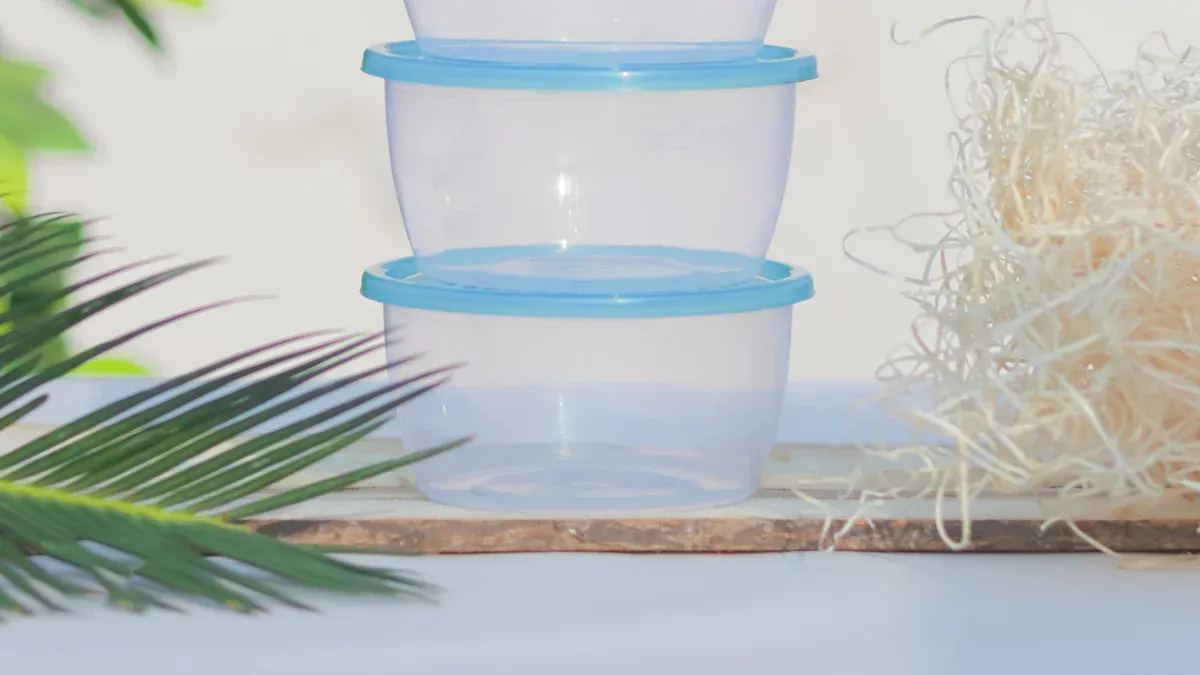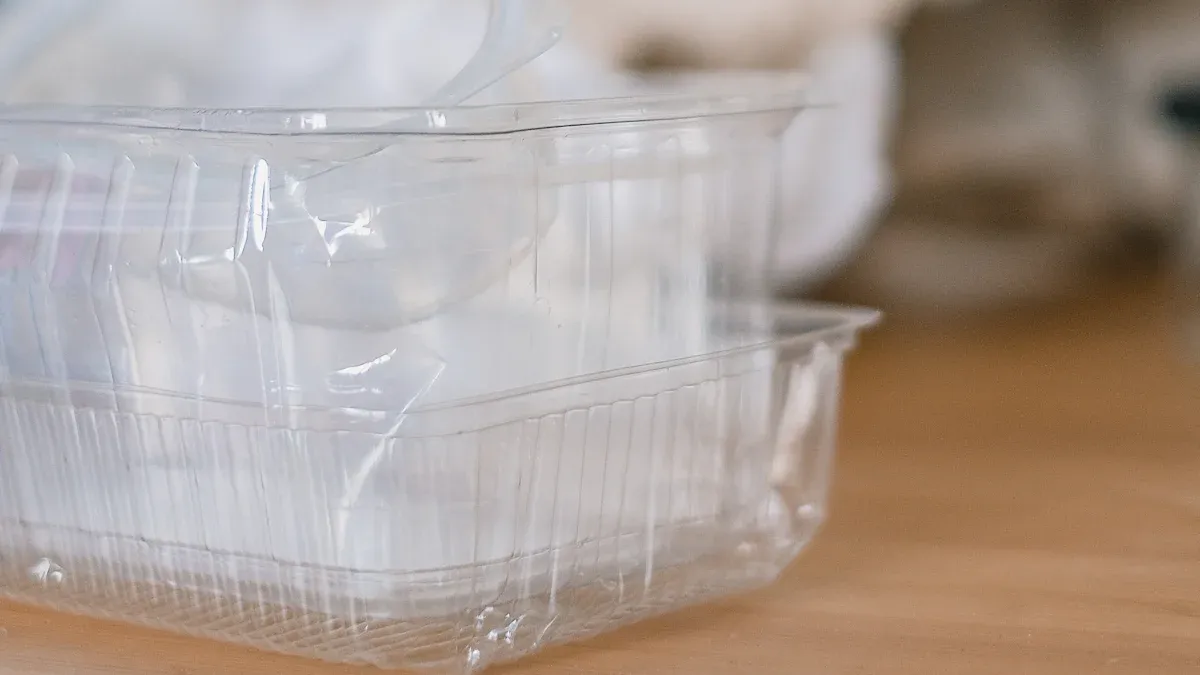
Warping issues arise when plastic parts bend or twist out of shape due to uneven stresses during manufacturing. This deformation often impacts thin-wall plastic products, such as storage containers or kitchen utensils, making them prone to distortion.
Addressing warping issues is essential for maintaining both the functionality and appearance of plastic products. A warped container, for example, may fail to seal properly, while visible deformation diminishes its aesthetic appeal. By understanding the causes of warping issues, you can ensure your items remain durable and visually pleasing.
Warping deformation can severely affect the functionality of plastic parts. When a product bends or twists out of shape, it often fails to perform its intended purpose. For example, a warped food container may not seal properly, leading to leaks or contamination. Similarly, warped kitchen utensils may become difficult to use, reducing their practicality.
Warpage is a common problem in injection molding, where parts deviate from their intended shape, leading to visible bending or twisting. This illustrates the significant consequences of warping in the production of plastic products.
The warping defect also compromises the structural integrity of plastic parts. This can result in uneven weight distribution or instability, making the product unreliable for everyday use.
Warping deformation often diminishes the visual appeal of plastic products. A warped surface may appear uneven or distorted, which can make the product look defective or poorly manufactured. This is especially problematic for items like storage containers or decorative household products, where appearance plays a key role in consumer satisfaction.
Consumers often associate visible defects with lower quality, which can harm the reputation of the manufacturer. Addressing warping issues is essential to maintain both the aesthetic and functional value of plastic products.
Warping deformation can significantly reduce the durability of plastic parts. When a product warps, it experiences uneven stress distribution, which weakens its structure over time. This makes the product more prone to cracking, breaking, or other types of warpage-related damage.
The warping and deformation of PE sheets not only diminish their aesthetic appeal but also adversely affect their functionality and longevity. This indicates that warping has serious implications for the quality and usability of plastic products.
By addressing warping issues early in the design and manufacturing process, you can enhance the durability and lifespan of your products.

Uneven shrinkage during cooling is one of the most common problems that lead to warping deformation in plastic parts. When plastic cools unevenly, different areas of the part shrink at varying rates. This creates internal stresses that distort the shape of the product. For example, in injection molding, uneven cooling often results from inconsistent mold temperatures or improper cooling channel designs.
To address this issue, you can focus on achieving uniform cooling throughout the part. Using advanced mold designs with optimized cooling channels ensures consistent temperature distribution. Additionally, controlling the cooling rate by adjusting processing parameters can minimize uneven shrinkage. These steps help reduce the risk of warping deformation and improve the overall quality of plastic parts.
The material you select plays a significant role in determining the likelihood of warping issues. Different plastics have unique shrinkage rates, which directly impact the warpage of plastic parts. For instance, materials with high shrinkage rates are more prone to warping deformation. Improper material selection can also lead to defects of injection molding, such as uneven wall thickness or structural weaknesses.
To minimize warping, choose materials with low shrinkage rates and high dimensional stability. Collaborating with material suppliers can help you identify the best options for your specific application. For example, reinforced plastics or materials with fillers often exhibit reduced shrinkage, making them ideal for products requiring precise dimensions. By prioritizing material selection, you can prevent warping and enhance the durability of your products.
Design flaws, such as improper product geometry or uneven wall thickness, significantly contribute to warping deformation. Thin-wall products are particularly vulnerable because their design often lacks the structural support needed to resist internal stresses. Warping can also occur due to mechanical mishandling or pre-existing conditions in components. For example, warped packaging may result from poor design or shipping issues.
To avoid these problems, optimize your product design for uniformity. Ensure that wall thickness remains consistent throughout the part, as uneven wall thickness increases the risk of warping. Conducting early design simulations can help identify potential flaws and allow you to make necessary adjustments before production. By addressing design flaws proactively, you can reduce warping issues and improve the overall performance of your products.
Inconsistent processing parameters often lead to warping deformation in plastic products. During injection molding, precise control of temperature, pressure, and cooling rates is essential. Any variation in these parameters can cause uneven shrinkage, which distorts the final product. For example, if the cooling rate differs across the mold, some areas of the plastic cool faster than others. This uneven cooling creates internal stresses, resulting in warping.
Several studies highlight how processing parameters influence warping:
- Temperature and pressure settings during molding directly affect material cooling and contraction.
- Incorrect injection speed and packing pressure often lead to uneven cooling.
- Uneven cooling remains a primary cause of warping and excessive shrinkage.
The interaction between these parameters plays a significant role in determining the extent of warping. Experimental data reveal that focusing solely on individual parameters is insufficient. Instead, you must consider how these factors interact to amplify or reduce warping defects.
| Key Findings | Description |
|---|---|
| Interaction Effects | The study shows that interactions among major process parameters significantly affect warpage defects. |
| Main Effects Limitation | It is insufficient to consider only the main effects, as interactions can amplify or reduce these effects. |
| Application | Results can guide process parameter screening and help minimize warpage defects through targeted control. |
To minimize warping deformation, you should adopt a systematic approach to control processing parameters. Start by optimizing temperature and pressure settings to ensure uniform cooling. Use advanced monitoring systems to detect and correct variations during production. By addressing these inconsistencies, you can reduce defects of injection molding and improve the quality of your products.

Choosing the right material is one of the most effective ways to avoid warping deformation in plastic parts. Materials with low shrinkage rates are less likely to distort during cooling. For example, reinforced plastics or those with fillers provide better dimensional stability. These materials reduce the risk of uneven shrinkage, which is a leading cause of warping.
When selecting materials, you should also consider their thermal properties. Plastics with consistent thermal conductivity distribute heat more evenly, minimizing internal stresses. Collaborating with material suppliers can help you identify options that meet your product's specific requirements. This step not only prevents plastic warpage but also enhances the overall quality of your products.
A well-designed part can significantly reduce the risk of warping deformation. Thin-wall products, for instance, often suffer from uneven wall thickness, which leads to internal stress and distortion. To address this, you should ensure that the wall thickness remains consistent throughout the part. Techniques like coring and adding gussets can improve structural support while reducing material usage.
Research shows that optimized designs with conformal cooling channels improve temperature distribution. This adjustment compensates for materials with lower thermal conductivity, such as stainless steel, ensuring uniform cooling. Customer testing has demonstrated that such designs achieve the same cooling effect within the same cycle time, reducing warping issues.
Additionally, using masterbatch can help maintain color uniformity in plastic parts. This approach eliminates defects related to color variations and improves production efficiency. By focusing on design adjustments, you can prevent warping and enhance both the functionality and appearance of your products.
Proper mold design plays a crucial role in controlling warping deformation. A well-designed mold ensures uniform cooling, which minimizes the risk of distortion. To achieve this, you should focus on several key aspects:
Studies have shown that optimized cooling systems and adjusted processing parameters, such as mold temperature and injection speed, significantly reduce warping in large, flat parts. These improvements not only enhance product conformity but also decrease scrap rates.
Incorporating mold flow analysis during the design phase can further refine your injection mold design. This tool helps identify potential issues, such as uneven cooling or shrinkage, before production begins. By following these best practices, you can effectively prevent warping and ensure the quality of your plastic parts.
Controlling processing parameters is essential to prevent warping deformation in plastic parts. Precise adjustments during injection molding can significantly reduce the risk of distortion and improve product quality. By focusing on key factors like temperature, pressure, and cooling rates, you can achieve uniform shrinkage and avoid warping issues.
Several processing parameters directly influence the warpage of plastic parts. Understanding these factors allows you to make informed adjustments during production:
| Factor | Description |
|---|---|
| Injection Pressure and Speed | Adjusting these parameters optimizes material flow and packing, reducing the risk of voids that can lead to warping. |
| Packing and Holding Pressure | Maintaining adequate holding pressure compensates for material shrinkage during cooling, preventing warping. |
| Cooling Rate | Controlling the cooling rate ensures uniform cooling, which is crucial to avoid warping due to rapid temperature changes. |
Scientific studies have demonstrated the importance of optimized processing parameters in reducing warping deformation. Research on microcellular co-injection molding highlights how factors like supercritical fluid content and core-to-skin volume ratio influence shrinkage and warpage. Using a 26-1 fractional factorial design, researchers analyzed these parameters and found that precise adjustments significantly reduced warping occurrences. This evidence underscores the value of systematic experimentation in improving production outcomes.
To avoid warping, you should adopt a systematic approach to processing control:
By applying these strategies, you can prevent warping and enhance the durability and appearance of your plastic parts.
Tip: Collaborate with mold design experts to refine your cooling systems and processing parameters. This partnership can help you achieve consistent results and reduce defects.
Early design simulations play a critical role in preventing warping deformation. By using tools like mold flow analysis, you can predict how materials will behave during injection molding. These simulations help identify potential issues such as uneven cooling or shrinkage before production begins. For example, you can test different designs to ensure uniform wall thickness, which reduces the risk of distortion.
Simulations also allow you to experiment with various processing parameters. Adjusting factors like cooling rates or injection pressure during the design phase ensures optimal conditions for your plastic parts. This proactive approach minimizes warping and improves the overall quality of your products.
Tip: Invest in advanced simulation software to save time and reduce costly errors during production.
Working closely with material suppliers can help you find the best solutions for warping issues. Suppliers often have in-depth knowledge of material properties, including shrinkage rates and thermal stability. By consulting them, you can select materials that are less prone to warping deformation.
For instance, reinforced plastics or materials with fillers provide better dimensional stability. These options reduce the likelihood of uneven shrinkage, which is a common cause of warpage of plastic parts. Collaborating with suppliers also ensures you stay updated on new materials and technologies that can enhance your manufacturing process.
Note: Building strong relationships with suppliers can lead to long-term benefits, including access to specialized materials and technical support.
Rigorous quality control measures are essential to detect and prevent warping deformation. Automated inspections, thermal tests, and flatness measurements ensure your products meet the required standards. These methods identify inconsistencies early, allowing you to address them before they affect the final product.
| Quality Control Metric | Purpose |
|---|---|
| Automated Optical Inspection (AOI) | Detects inconsistencies in copper distribution. |
| Thermal Cycling Tests | Ensures stability under varying temperatures. |
| Flatness Measurement | Confirms the final board meets tolerances. |
By integrating these metrics into your production process, you can maintain consistent quality. Regular inspections also help you refine your manufacturing techniques, reducing the risk of warping over time.
Tip: Use advanced monitoring systems to track quality control metrics in real-time for better accuracy and efficiency.
Understanding the causes of warping deformation is essential for maintaining the quality of plastic household items. Uneven cooling, material properties, and design flaws often lead to warping. You can prevent these issues by selecting low-shrinkage materials, optimizing designs, and controlling processing parameters. Early prevention through simulations and quality checks ensures better results. By addressing warping deformation proactively, you enhance product durability and customer satisfaction. Manufacturers who prioritize these practices reduce warping issues and improve production efficiency.
Tip: Start implementing these strategies today to minimize warping deformation in your products.
Warping deformation happens when plastic parts bend or twist out of shape due to uneven stresses during cooling. This issue often affects thin-wall products like containers or utensils.
Tip: Focus on uniform cooling and proper material selection to reduce warping risks.
You can spot warping by checking for uneven surfaces, bent edges, or improper fitting. Warped items may also fail to function as intended, such as a lid that doesn’t seal properly.
Low-shrinkage materials like reinforced plastics or those with fillers work best. These materials provide better dimensional stability and reduce the risk of uneven shrinkage.
| Material Type | Benefits for Warping Prevention |
|---|---|
| Reinforced Plastics | High dimensional stability |
| Plastics with Fillers | Reduced shrinkage and improved strength |
Yes, poor mold design often leads to uneven cooling, which causes warping. Optimize cooling channels and gate placement to ensure uniform temperature distribution during production.
Processing parameters like temperature, pressure, and cooling rates directly affect shrinkage. Proper control ensures uniform cooling, reducing internal stresses that cause warping.
Note: Regularly monitor and adjust these parameters for consistent results.